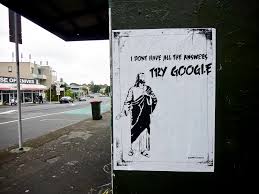 Dream researchers are creatively deploying a variety of big data technologies to open a new era of oneiric discovery.
Dream researchers are creatively deploying a variety of big data technologies to open a new era of oneiric discovery.
An article appeared earlier today by Robert Lee Hotz, science reporter for the Wall Street Journal, titled “New Insights into Dreams and What They Say About Us.” It’s a great article, well-written and thoroughly researched, and quite fair-minded towards the scientific study of dreams. (The article can be found here, if you have WSJ access.)
Here is my favorite line:
“While still highly experimental, the new dream studies underscore the power of data mining to assemble unexpected insights by sifting through large data sets of seemingly unrelated information.”
That is very well put. Exciting possibilities beckon on the horizon, and yet much more work needs to be done in mapping the multidisciplinary terrain between here and there. Hopefully others who read the article will recognize these potentials and contribute their insights to this dynamic, though still “highly experimental” realm of inquiry.
I always want to get people more enthused about the study of dreams—but not too enthused. To my great relief, Hotz concludes the WSJ article with some cautionary words (my own included) about the need for greater ethical evaluation and awareness of the possibly harmful abuses of these technologies.
Two follow-up notes from the article.
First, the survey of dreams in relation to the Black Lives Matter movement and recent protests against racial injustice involved 4,947 American adults, completing an online questionnaire designed by me and administered by YouGov on June 15-19, 2020. I am currently working with Michael Schredl on an article analyzing the responses to this survey. An early preview of the results appeared in a post I wrote for Psychology Today on June 25, 2020. The data from this survey are not yet available in the Sleep and Dream Database, but they will be soon.
Second, to the question of “How many dream reports from how many people are in the SDDb?” I gave the estimate of more than 26,000 dreams from more than 11,000 people. I obtained those figures by using the SDDb’s advanced word search tool and defining the data set as all reports with a minimum word count of 5, which yields a result of 26,498 dreams from 11,346 participants. There are surely many additional dreams in the database of less than five words, but many of those reports include “non-dream” answers (such as “no,” “don’t remember any”), which are important to preserve but shouldn’t be counted in overall tallies of the actual dreams. There are also some non-dreams of more than 5 words, but not enough to alter the basic estimate of 26,000 dream reports currently in the database.

